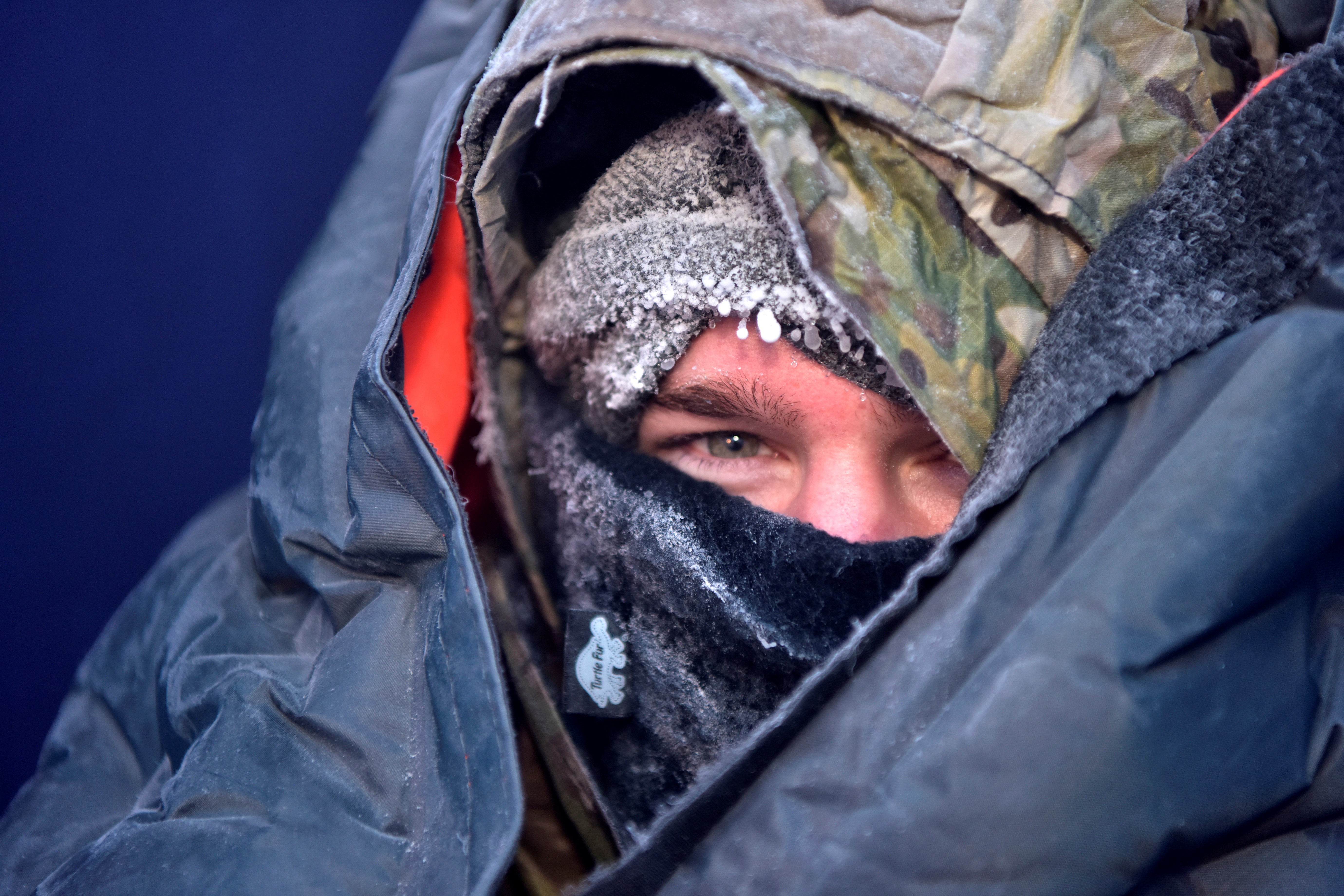Today’s Air Force Arctic survival gear tests have a long history in Alaska
Nearly 60 years ago the Air Force was also testing cold-weather survival gear in Fairbanks.

The U.S. Air Force’s F-35 may be the most expensive weapons system ever built, but space inside the new fighter is at a premium, so packing an Arctic survival kit is no easy task.
The survival kit used on the F-16 fighter jet does not fit under the ejection seat on the new F-35. So shrinking the size of the kit, while providing essential gear, has become an important mission at Eielson Air Force Base in Alaska, where 54 of the new jets are expected by 2022.
One of the larger items in the old Arctic survival kits is the sleeping bag, an essential element in surviving in the Arctic cold.
Finding the smallest and warmest bag has been a challenge, but the Air Force thinks the problem may soon be solved.
In a recent test in a frigid laboratory “cold room,” Lt. Col. James Christensen said a sleeping bag made by a Colorado company kept him from freezing, if not completely comfortable, at extreme temperatures.
The mummy bag from Wiggy’s uses a synthetic fiber called Lamilite and can be vacuum sealed without losing its insulation qualities. Down sleeping bags do not work nearly as well, as they don’t “loft up” as well after being unpacked.
The bag from Wiggy’s worked, the Air Force pilot said.
“This would enable pilots to survive for hours while awaiting rescue,” Christensen wrote to Stars and Stripes, a U.S. military newspaper, about the qualities of the Lamilite bag.
“However, I was never really warm or comfortable in that environment with this gear. I still had cold legs, feet and face, and the hands were a problem throughout the test. It will keep you alive, but not comfortable. Don’t touch anything metal at that temperature!”
In its report on the sleeping bag, Stars and Stripes said the temperature inside the cold room actually dipped far below the 40-below target, down to 65-below Fahrenheit.
“The system we tested has a lot of individual components to put on,” Christensen told the newspaper. “It was difficult with my cold hands to get all of the gear on in a timely manner, but after everything was on, the system provided excellent protection.
“By using all of the pilot cold weather clothing, plus the survival system and the one-man life raft, I could build a cocoon of warm air surrounding my body,” he said.
This is hardly the first time that Interior Alaska has been the site for testing the properties of Arctic sleeping bags.
Nearly 60 years ago, a military research office called the Arctic Aeromedical Laboratory in Fairbanks published a study and evaluation of the “Walk-Around Sleeping Bag.”
The idea was to end the need to pack both a parka and a sleeping bag by converting the latter into an oversized garment that made the wearer looked like a giant mummy.
All sorts of wearable sleeping bags are available today, but that was not the case in the 1950s.
“Modifications included arm openings with cuffs that the user could tighten with drawstrings; a bottom that could be pulled up and tied around the waist to free the legs; the addition of two double pull zippers to replace the single zipper, thereby allowing the wearer to open the sleeping bag from the bottom and the top as well as from the inside or the outside,” the researchers said.
The bag served its dual purposes, though a redesign attempted a decade later did not, as that one required wearers to pull the bag up over their knees, which “resulted in a marked cooling of the trunk,” the lab said.
Dermot Cole can be reached at de*********@gm***.com.

